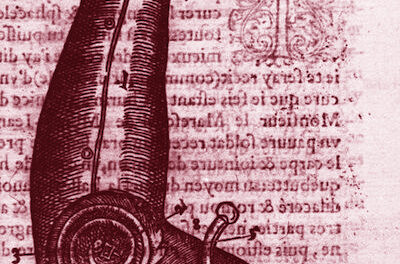Letter from the Editors
by Emily Pellegrini and Meera Velu
Issue 15: Superstition
Sometimes when I’d arrive at my grandmother’s apartment, she’d lead me by the arm into the kitchen and point to a knife lying on the counter or floor. Only after I’d picked it up and placed it in the sink would she greet me. See, one should never pick up a knife they’ve dropped, nor thank the person who does, lest they invite an unwanted late-night visitor or a general run of misfortune. The precise repercussions are hazy (and the origins hazier still), yet I never pick up a knife dropped by my own hand.
We introduce Issue 15 with Emily’s anecdote to illustrate how superstition both engages and inexplicably compels us. Superstition is difficult to describe without belittling its power, and that elusive nature makes it a rich theme for speculation. Even the most steadfastly “evidence-driven” among us turn to superstition in the face of the utter uncontrollability of life, corporeal hazards, and unfavorable behaviors. Under the influence of superstition, a single city block might be read as a series of dares: to walk under the ladder or around it, to pay the cracks in the pavement no mind or step gingerly over them. Whether we truly believe them or not, these warnings, heard from our peers and elders, echo in our minds, and so we move accordingly.
The issue’s contributing authors tap into superstition’s vein to draw out stories of fortune and loss that explore the conception of–and our reliance on–these seemingly groundless rituals and beliefs.
Morgan Melhuish’s “Subject” starts the issue off with a cryptic tale of imaginal power. Upon visiting a gallery, the protagonist begins to look more closely at everything he sees–the profile picture of his date, the paintings on the wall, and the very man in front of him. We’ve all heard the lore that a photograph can steal the soul; can a painting do the same?
With “Something Living,” Natasia Rose invites us to a future Brooklyn, where an overeager girl follows a trail of seeds laid out by her mother, only to find that, at the end, there is danger in wanting too much.
Siobhan O Ekeh delivers the final story of the issue with “The One You Love,” which explores the fallibility of our projections. In this piece, another daughter navigates being cast as an omen by her elders, and finds release in unexpected places.
Turning to poetry, Nyeree Boyadjian’s “To Believe Is a Choice,” overlays ritual with myth to reveal that the value and strength of a superstition ultimately rest on the faith one invests in it.
We end Issue 15 in conversation with T.L. Huchu, whose stories explore the human relationship to the material and the unknown. Huchu elaborates on how we’ve come to define and rely upon superstition, making it an integral form of understanding the world.
With these pieces, we invite you to reflect upon your practices and the magic you may unknowingly invoke. And to keep speculating.




